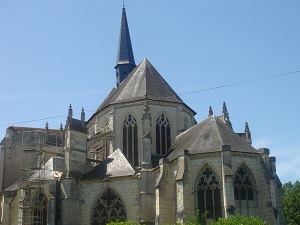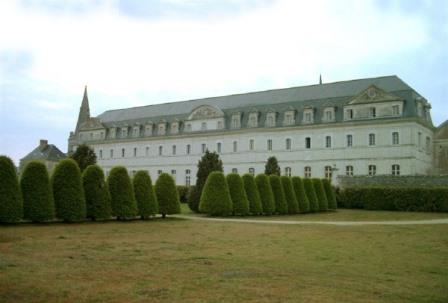For our church on Sunday feature we tried to find one that could tie in with last week's 'bridges' theme - what we found was in fact two! The small town of Pontlevoy in Loir-et-Cher is understood to have derived its name from the fact that an early settlement was divided by the river Anguilleuse with only one bridge (pont) connecting the two halves. It had grown up around a church that was surrounded by a Merovingian (450 -500) burial site. The original church was dedicated to Saint John the Baptist and the current church of Saint-Pierre has a chapel dedicated to him with traces of a 13th century building apparently still evident. The current church is a melange of styles from different periods with its flamboyant gothic style asp being added in the 15th century when the monks from the neighbouring abbey were restoring their own church that had been destroyed by the English during the 'Hundred Years War'. Modifications continued throughout the centuries with the current nave dating from the 19th.
The surrounding abbey was founded in 1034 by a local lord 'Guelduin le Jeune' in recognition of his live being saved during a storm at sea on his return a pilgrimage to Jerusalem - the Virgin Mary apparently appeared and calmed the waters. Administered by Benedictine monks the abbey complex thrived and with it, the town. Unfortunately the English incursions and the 'Wars of religion' saw a great deal of damage inflicted on the abbey and the reconstruction of the abbey church went no further than the current apse and choir.

In 1631 a new movement of Benedictine monks came to the Abbey and it prospered spiritually and intellectually. The monks decorated the interior of the church with Baroque art and built the monastery buildings which still exist today.
In 1644, the monks reopened a college and built new buildings to extend it. In 1776, a Royal Military School was established by Louis XVI here and became quite a prestigious place of learning.

It served as a military hospital during both World Wars and closed as a school in 1942. It then had a number of revival attempts before its future seemed secure when an American businessman acquired all of the buildings and organized internships for American students as well as cultural activities. The running of such an establishment has however proven to be a heavy burden an its future now is uncertain.






No comments:
Post a Comment